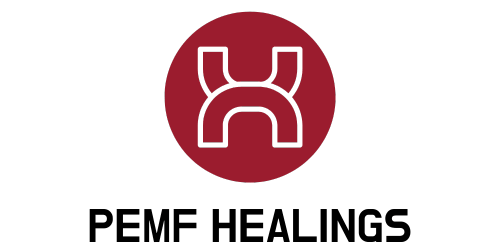Have you ever wondered how PEMF therapy can help speed up your injury recovery? Whether you’ve recently experienced a sports injury or are struggling with chronic pain, PEMF therapy might just be the answer you’ve been searching for. By utilizing electromagnetic fields, this innovative therapy targets damaged cells and stimulates healing at a cellular level. In this article, we’ll explore the science behind PEMF therapy and discover how it can assist your body in bouncing back from injuries more efficiently. Get ready to unlock the secrets of this cutting-edge healing technique!

What is PEMF Therapy?
Definition
PEMF therapy, or Pulsed Electromagnetic Field therapy, is a non-invasive treatment that uses electromagnetic fields to stimulate the body’s natural healing processes. This therapy has been used for decades to effectively alleviate pain, reduce inflammation, promote healing, and improve overall physical and mental well-being.
History
PEMF therapy traces its roots back to the 18th century when scientists discovered the connection between electricity and human biology. Over time, the understanding of the therapeutic potential of electromagnetic fields grew, leading to the development of modern PEMF devices. Today, PEMF therapy is widely recognized as a valuable tool in the field of injury recovery and sports medicine.
Mechanism of Action
PEMF therapy works by delivering low-frequency electromagnetic pulses to the body. These pulses penetrate deep into the tissues, stimulating cellular activity and promoting healing at a cellular level. These electromagnetic fields interact with the body’s natural electromagnetic field, enhancing circulation, increasing oxygenation, and boosting the body’s ability to repair and regenerate damaged cells.
Benefits of PEMF Therapy
Increased Blood Flow
An essential component of injury recovery is sufficient blood flow to the affected area. PEMF therapy promotes vasodilation, improving blood circulation and oxygenation of tissues. This increased blood flow helps deliver vital nutrients and remove waste products, ultimately accelerating the healing process.
Reduction in Swelling
Swelling is a common response to injury and can impede the healing process. PEMF therapy aids in reducing swelling by improving lymphatic circulation and promoting the removal of excess fluid from the injured area. This reduction in swelling alleviates discomfort and allows for faster healing.
Pain Relief
One of the most significant benefits of PEMF therapy is its ability to provide pain relief. By stimulating the release of endorphins, the body’s natural painkillers, PEMF therapy helps alleviate acute and chronic pain. It also reduces nerve sensitivity and inflammation, providing much-needed relief to individuals recovering from injuries.
Accelerated Healing
PEMF therapy facilitates the healing process by improving cellular metabolism and increasing the production of adenosine triphosphate (ATP), the energy molecule that drives cellular processes. This accelerated healing allows injured tissues to repair and regenerate more efficiently, reducing recovery time.
Improved Range of Motion
Injuries often result in limited range of motion and stiffness. PEMF therapy can help by relaxing muscles, reducing muscle spasm, and improving flexibility. By enhancing the suppleness of muscles and joints, individuals undergoing PEMF therapy experience increased mobility and reduced pain during movement.
Enhanced Muscle Function
Muscle function is vital for injury recovery and rehabilitation. PEMF therapy stimulates the growth of new muscle fibers, promotes muscle repair, and enhances muscle strength and performance. Individuals undergoing PEMF therapy often experience improved muscle function, making it easier to regain strength and engage in physical activities.
Stress Reduction
Injury recovery can be mentally and emotionally taxing. PEMF therapy has been shown to help reduce stress and improve relaxation. By activating the body’s natural relaxation response, it promotes a sense of calm and overall well-being, which is crucial for a successful recovery journey.
PEMF Therapy for Specific Injuries
Muscle Strains and Tears
Muscle strains and tears are common injuries, often resulting from overexertion or trauma. PEMF therapy aids in the healing process by reducing inflammation, improving blood flow, and alleviating pain. It also helps prevent scar tissue formation, allowing for optimal muscle recovery and minimizing the risk of reinjury.
Joint Sprains
Joint sprains can be painful and limit mobility. PEMF therapy helps accelerate the healing of sprained joints by reducing swelling, promoting tissue repair, and improving joint mobility. By aiding in the regeneration of damaged ligaments, PEMF therapy strengthens and stabilizes the affected joint, reducing the risk of future injuries.
Fractures and Bone Healing
Fractures require adequate time to heal, and PEMF therapy can expedite this process. By stimulating bone cells and increasing collagen synthesis, PEMF therapy helps promote bone remodeling and speed up fracture healing. It also enhances the mineralization of bone tissue, resulting in improved bone density and strength.
Tendon and Ligament Injuries
Tendon and ligament injuries can be challenging to recover from due to their limited blood supply. PEMF therapy assists in the healing of these injuries by promoting blood circulation, facilitating collagen synthesis, and reducing scar tissue formation. This therapy strengthens tendons and ligaments, improving their flexibility and resilience.
Post-Surgical Recovery
After surgery, PEMF therapy can aid in postoperative recovery. It helps reduce pain and inflammation, improves tissue regeneration, and accelerates wound healing. By supporting the body’s natural healing processes, PEMF therapy promotes faster recovery, improved mobility, and a decreased risk of complications.
Clinical Evidence Supporting PEMF Therapy
Randomized Controlled Trials
Numerous randomized controlled trials have demonstrated the efficacy of PEMF therapy in promoting injury recovery. These studies have shown significant improvements in pain reduction, wound healing, and functional outcomes when PEMF therapy is incorporated into treatment protocols for various injuries.
Case Studies
Case studies provide further support for the effectiveness of PEMF therapy in injury recovery. These individual reports highlight how PEMF therapy can contribute to better outcomes, decreased recovery time, and improved quality of life for patients with specific injuries.
Expert Opinions
Experts in the field of injury recovery and sports medicine have expressed their support for PEMF therapy as a valuable treatment modality. These professionals acknowledge the potential of PEMF therapy in enhancing healing, reducing pain, and improving functional outcomes. Their expertise and endorsement lend credibility to the use of PEMF therapy in injury recovery.
Precautions and Contraindications
Pregnancy
While PEMF therapy is generally safe for many individuals, it is not recommended for pregnant individuals, as the effects on developing fetuses are not well understood. Pregnant individuals should consult with their healthcare providers before considering PEMF therapy.
Presence of Implants or Metal
Certain implants and metal objects may be susceptible to heating or movement when exposed to PEMF therapy. It is important to inform healthcare providers or therapists of any implants or metal in the body to avoid potential complications.
Epilepsy
Individuals with epilepsy should exercise caution when considering PEMF therapy. The electromagnetic fields generated during treatment may trigger seizures in those who are susceptible. It is crucial to consult with a healthcare professional before undergoing PEMF therapy if you have epilepsy.
Cancer
The safety and efficacy of PEMF therapy for individuals with cancer are not well established. Some studies suggest that PEMF therapy may have anticancer effects, while others suggest potential risks. It is vital for individuals with cancer to discuss the use of PEMF therapy with their healthcare providers.
Electromagnetic Sensitivity
A small percentage of individuals may experience sensitivity or adverse reactions when exposed to electromagnetic fields. If you have a known sensitivity to electromagnetic radiation, it is essential to consult with a healthcare professional before undergoing PEMF therapy.
Choosing a PEMF Device
Frequency Range
Different injuries may benefit from specific frequency ranges. It is crucial to choose a PEMF device that offers a frequency range tailored to your injury and intended outcomes. Consult with a healthcare professional or PEMF therapist to determine the most appropriate frequency range for your needs.
Intensity Levels
The intensity of PEMF therapy plays a significant role in its effectiveness. Higher intensity levels may be necessary for deeper tissue penetration, while lower intensity levels may suffice for more superficial injuries. Ensure that the chosen PEMF device offers adjustable intensity levels to cater to your specific injury and comfort level.
Portability
Consider your lifestyle and treatment needs when selecting a PEMF device. If you require mobility or need to travel frequently, choose a portable device that allows you to continue your therapy while on the go. Portable PEMF devices offer convenience and flexibility in incorporating therapy into your daily routine.
User-friendly Interface
A user-friendly interface is essential for seamless integration of PEMF therapy into your recovery routine. Look for devices with intuitive controls, clear display screens, and easy programming options. A user-friendly interface ensures that you can adjust settings and monitor progress effortlessly.
Safety Features
Safety should be a top priority when choosing a PEMF device. Look for devices with built-in safety features, such as automatic shut-off timers and temperature sensors. These safety features enhance the overall user experience and minimize the risk of adverse reactions or device malfunctions.
Customer Reviews
Customer reviews can provide valuable insights into the effectiveness and reliability of a PEMF device. Read reviews from verified users to gauge the device’s performance, durability, and overall customer satisfaction. Consider the experiences and feedback of others to make an informed decision.
How to Use PEMF Therapy for Injury Recovery
Consultation with a Healthcare Professional
Before starting PEMF therapy, it is crucial to consult with a healthcare professional, especially if you have any underlying health conditions or are recovering from a recent injury or surgery. A healthcare professional can assess your specific needs, provide guidance, and ensure that PEMF therapy is suitable for you.
Understanding the Treatment Protocol
Every injury requires a personalized treatment protocol. Work closely with your healthcare professional or PEMF therapist to create a treatment plan tailored to your injury and recovery goals. Understand the duration, frequency, and intensity of each session, as well as any additional therapies or precautions that may be necessary.
Positioning and Duration of Sessions
Proper positioning during PEMF therapy sessions is essential for optimal results. Follow the instructions provided by your healthcare professional or therapist to ensure that the electromagnetic fields reach the appropriate areas. The duration of each session may vary depending on your injury and the device being used. Adhere to the recommended session duration to maximize the benefits of PEMF therapy.
Combining with Other Therapies
PEMF therapy can be combined with other complementary therapies to enhance injury recovery. Physical therapy exercises, massage, and cold or heat therapy may work synergistically with PEMF therapy to promote healing and improve functional outcomes. Consult with your healthcare professional or therapist to determine the most effective combination of therapies for your specific injury.
Conclusion
Summary of Benefits
PEMF therapy offers numerous benefits for individuals recovering from injuries. It improves blood flow, reduces swelling, provides pain relief, accelerates healing, enhances range of motion and muscle function, and promotes stress reduction. With these advantages, PEMF therapy can significantly contribute to a successful recovery journey.
Importance of a Personalized Approach
It is crucial to approach PEMF therapy with a personalized mindset. Each injury and individual require a customized treatment plan and device selection. By working closely with healthcare professionals and therapists, individuals can ensure that they receive the most suitable and effective PEMF therapy for their specific injury and recovery goals.
Future Research Directions
While there is a growing body of evidence supporting PEMF therapy’s effectiveness in injury recovery, further research is still needed. Future studies should focus on specific injury types and patient populations, as well as the long-term effects of PEMF therapy. Continued research will enhance our understanding of PEMF therapy and its potential applications in injury recovery.
In conclusion, PEMF therapy is a valuable tool in the field of injury recovery. Its ability to stimulate natural healing processes, reduce pain and inflammation, and promote overall well-being makes it an effective and non-invasive treatment option. By understanding the benefits, precautions, and personalized approaches to PEMF therapy, individuals can optimize their recovery journey and enhance their quality of life.


